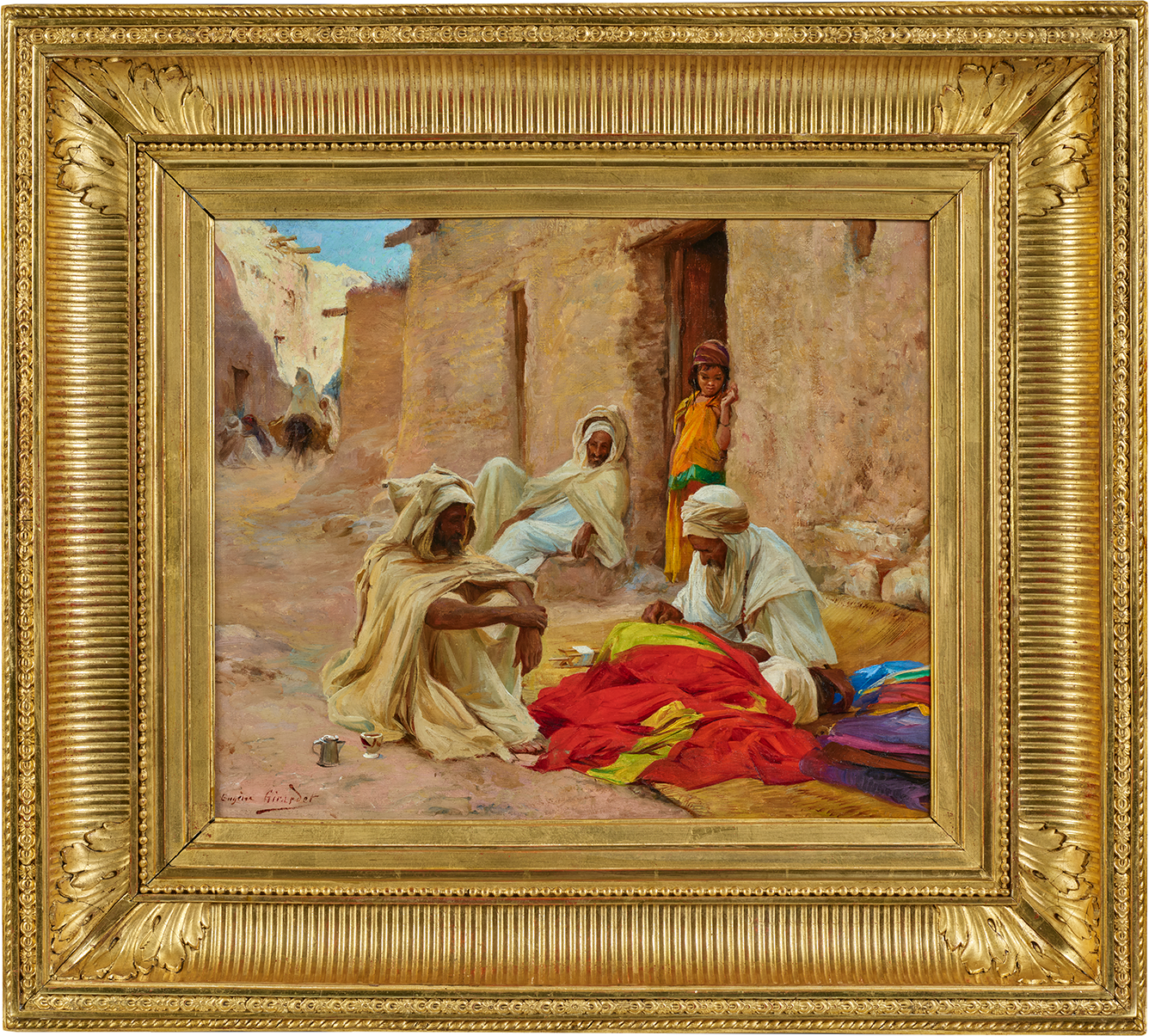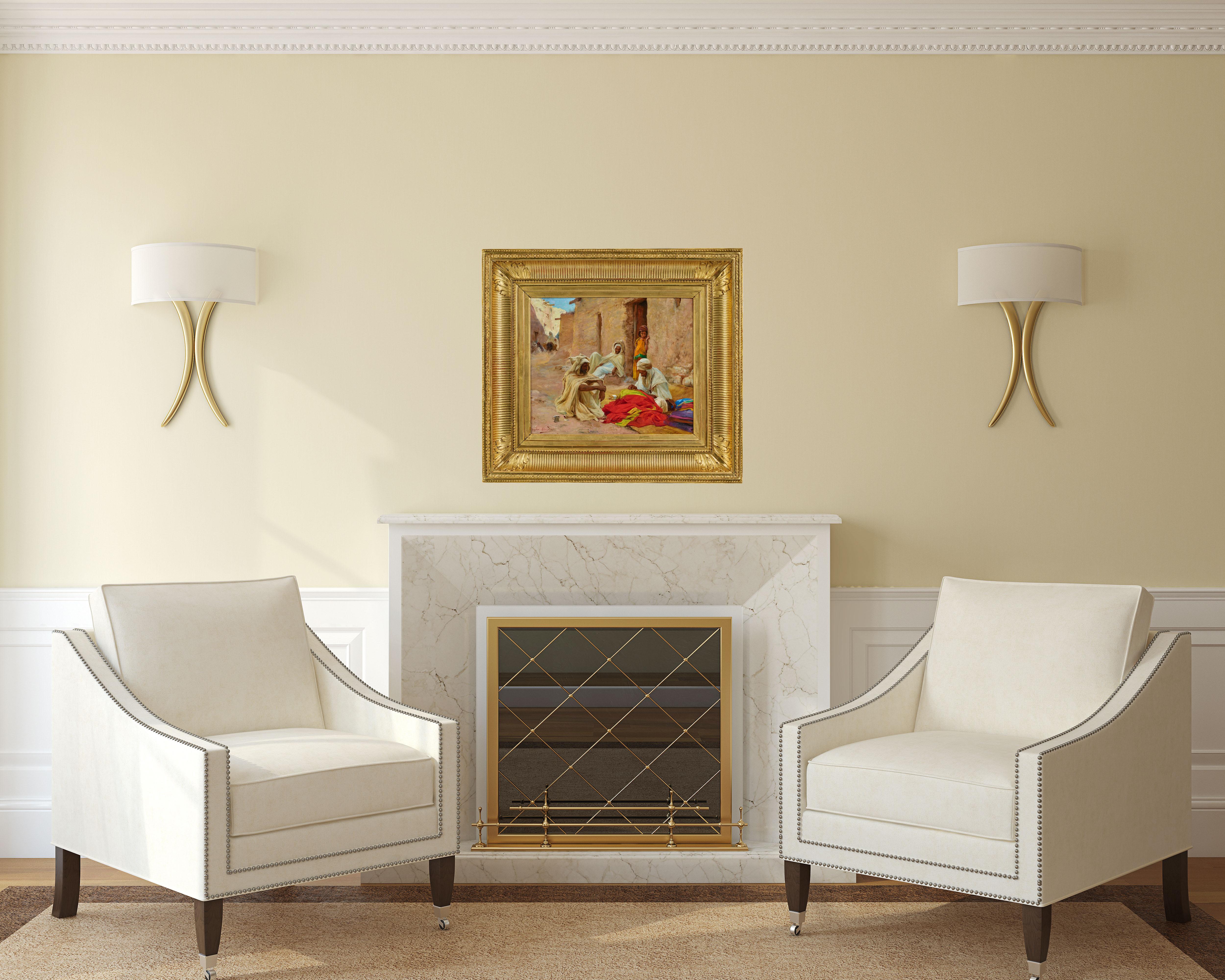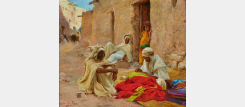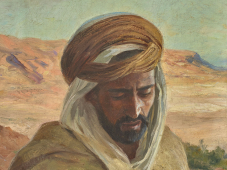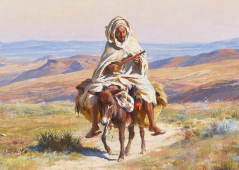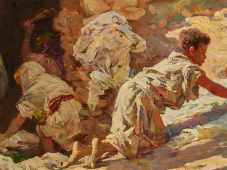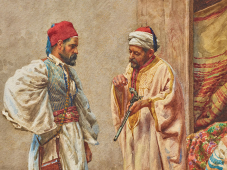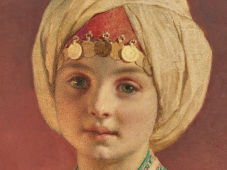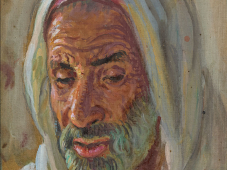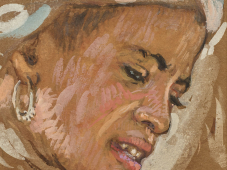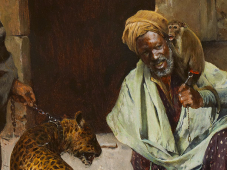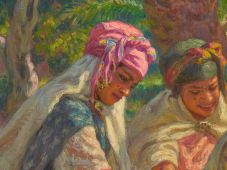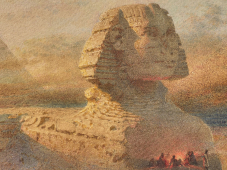The tailor
Description of the artwork
Eugène Girardet was a painter of scenes from everyday life, particularly in the Middle East and North Africa, which he discovered in 1874 on the advice of his master Jean-Léon Gérôme. The latter also worked on recurring subjects, often producing several versions of the same theme. Girardet, like his master, produced several paintings on the same theme throughout his career.
In a narrow street, probably in the medina of El-Kantara, a man sitting on a mat is busy sewing a bright red and yellow fabric, contrasting with the cream and white tones of the surroundings and the clothes of the men around him.
Girardet visited the oasis of El-Kantara and the surrounding desert many times in the company of Etienne Dinet. Like many artists, he preferred southern Algeria, a less Europeanised region than the north, offering more opportunities to depict the Orient in its most authentic form.
There are several versions of the El-Kantara stonemasons: the Musée des Beaux-Arts in Saintes has a larger version dated 1897, and another dated 1896 — two years before Girardet's trip to Egypt and Palestine. The version presented here can be dated to the same period as these two other paintings and attests to the success this composition enjoyed from the moment it was created.
75008 Paris, France
Saturdays from 2 to 7 p.m.




